Introduction
We’ve come a long way since the first hybrid IEM. What started out as a novelty in a landscape of pure-BA and single-DD IEMs has now become easily the largest subset of the audiophile IEM market, and still growing today.
And while the early days of the hybrid IEM was mainly dominated by the BA-DD setup, other more exotic drivers have continued showing up in more and more IEMs. Eventually the drivers wars resulted in the creation of the “tribrid”, which is any IEM that uses three different types of drivers. Perhaps the earliest of tribrid setups was the piezo-BA-DD, though due to the moody nature of the piezoelectric tweeter it didn’t really take off in popularity even till today.
Enter stage left: the Sonion electrostatic tweeter (EST). Not actually an electrostatic, closer to an electret, but the marketing stuck regardless. And so begins yet another arms race with every manufacturer desperately trying to shove one of these into a shell for the marketing boost it gave.
The early days of Sonion EST adoption was more about rushing out products with the driver rather than actually trying to leverage its advantages. The FitEar EST or the Empire Ears Wraith, just to name a couple of early examples. These EST hybrids were notorious for having basically zero treble extension owing to the ridiculously low sensitivity of the ESTs, and without the proper circuitry one just ends up with a product that’s worse off as compared to if it were to use standard BA tweeters instead.
But behind the scenes, the ones who don’t rush development eventually come out on top. The Vision Ears Elysium or the Elysian Annihilator for instance, just a couple of the IEMs that could truly show off the full capabilities of the Sonion EST through smart circuit design. And here is where we begin yet another driver arms race: the tribrid wars.
What was once exclusive to the multi-kilobuck crowd since had its average prices lowered down into the sub-grand ranges through the sheer hypercompetitive nature of the IEM market. Of course we are all familiar with the original ThieAudio twins, arguably the ones who truly started the price wars in the tribrid scene. And so the prices get lowered further and further until today, where high-quality EST tribrids can be had for $500.
But which ones are the best, you cry out. Fret not, for today I review and compare 5 of today’s most competitive ~$500 tribrids to aid your purchase decision. And while this list is in no particular order, let’s start with what is arguably the weakest of the lot…
DUNU EST 112
Product page: https://www.dunu-topsound.com/est-112
MSRP: $490
Driver configuration: 2EST + 1BA + 1DD hybrid
This EST 112 was kindly provided by DUNU.
Signature & Tonality
Not sure how to read graphs? Click here
The signature of the EST 112 can be described as neutral to mildly V-shaped, though to me it’s closer to the former. There’s just a small hint of midrange unevenness but nothing that really raises the alarm bells.
The biggest issue I have with the EST 112 is that it arguably has the worst implementation of the Sonion ESTs amongst this pool of tribrids. It’s not as bad as the early EST hybrids, that’s for sure, but for something that came out in 2021 it’s certainly on the disappointing side. As such, the EST 112 comes across as slightly lacking air, and the biggest shortfall in what is otherwise an extremely balanced presentation.
Then again with siblings like the Zen, one could make the argument that this would be DUNU’s “house sound”.
But really, this is all scrutiny for scrutiny’s sake. In a vacuum the EST 112 is still a very well-tuned IEM that’s inoffensive with little weaknesses. But in the context of this shootout, said weaknesses get amplified to a further degree.
Tone Grade: B+
For more information on the new grading system, click here
Technicalities
In short, the EST 112 is “good”. Not terrible, but not something I’d classify as a technical specialist.
The overall resolution of the EST 112 is adequate in that its transients have a slight bit of bluntedness going on (relative to the others in this shootout) and, coupled with the subpar EST implementation, makes it such that it’s probably also the weakest of the lot in terms of sheer detail retrieval.
Per usual, imaging performance is average (like most IEMs out there) so the EST 112 comes off as the tribrid that stands out the least. Not bad, but excellence is expected at this point.
Technical Grade: B
For more information on the new grading system, click here
Valuation
I wouldn’t go as far as to call the EST 112 a “nothing IEM”, but it’s playing in an increasingly crowded space where the bar is shifted increasingly higher and higher. And in today’s market… the EST 112 isn’t really performing to the standard of what I’d expect out of $500; maybe a year ago I’d be more inclined to award the single star, but alas.
Don’t get me wrong, the EST 112 is really “not worth the price” under IEF standards, but maybe you’re one with only $500 and absolutely require a tribrid… for whatever reason. In which case, the EST 112 would be your best (and only) choice.
Value Rating: N/A
For more information on the new grading system, click here
ThieAudio Excalibur
Product page: https://www.linsoul.com/products/thieaudio-excalibur
MSRP: $530
Driver configuration: 2EST + 2BA + 1DD hybrid
This Excalibur was kindly provided by Linsoul.
Signature & Tonality
Not sure how to read graphs? Click here
The signature of the Excalibur can be described as V-shaped.
The Excalibur is probably the bassiest of the 5 here, and subsequently also the thickest in terms of note weight. As a result it’s also the most “imbalanced” in terms of its tonal profile, but that also gives it the energy and excitement that most of the models in this shootout are lacking in comparison.
In the context of this shootout, the Excalibur is the one that goes a little off the rails, but in the context of the general market the Excalibur is still rather tame and balanced. Everything is relative, after all.
Tone Grade: A-
For more information on the new grading system, click here
Technicalities
Big surprise, the Excalibur is probably one of the most technical performers on this list. My wild guess being that the ESTs were implemented slightly better than the rest with proper SPL and drivability, but I’m not here to speculate too much.
The end result is that the Excalibur comes off as a little more sharp and resolving in its notes, especially up in the air frequencies. It’s not a massive difference; after all as we go higher up the performance ladder the gains diminish quickly. The Excalibur is no Annihilator, don’t get me wrong, but you don’t need to be the best-of-the-best to be appreciated.
Average imaging per usual, not much to say on that front. Overall the Excalibur is technically solid, and I can’t criticise it too much on this front.
Technical Grade: A
For more information on the new grading system, click here
Valuation
$530 is not throwaway money, despite what many in the hobby may tell you. You should expect a lot when dropping that kind of cash, and in the case of the Excalibur… I think it’s worth it.
I don’t think it’s the best buy in the category of course; Etymotic’s own legendary ER4 series also sit around the “A-” mark, yet can be had for basically half the price on the street. But regardless, as a $500 tribrid with arguably a little more complexity than the ER4, the premium doesn’t seem too bad. Especially since the Excalibur, despite not the best in this list, would outperform a multitude of multi-kilobuck IEMs in the market today.
Your average IEM enthusiast is spoilt for choice these days, so I’d say why not put the Excalibur on your shortlist if it’s within budget. Certainly worth a consideration.
Value Rating: ★
“Worth the price”
For more information on the new grading system, click here
ThieAudio Oracle
Product page: https://www.linsoul.com/products/thieaudio-oracle
MSRP: $540
Driver configuration: 2EST + 2BA + 1DD hybrid
This Oracle was kindly provided by Linsoul.
Signature & Tonality
Not sure how to read graphs? Click here
The signature of the Oracle can be described as neutral with a bass boost.
Between the two new ThieAudio tribrid releases, I vastly prefer the Oracle’s tonality. Hell, within the context of this shootout the Oracle probably has the best tonal profile period. There’s little excitement but there’s no denying that it’s an extremely balanced set with virtually no weaknesses.
The Oracle is probably the best representation of the “as it should be” classification of IEM tunings. Nothing sounds out of place and there’s barely any colouration (even the sub-bass boost sounds less like a “boost” and more a natural extension of the neutral-ish tuning as a whole), resulting in one of the most natural-sounding tonalities I’ve heard in an IEM.
Couple that with solid low-end extension and an EST implementation that would shame most other EST-hybrids, and what you get is an IEM that is practically near-perfect for those seeking balance above all else. An all-rounder in the truest sense of the word; top grades across the board.
Tone Grade: S
For more information on the new grading system, click here
Technicalities
Relative to the best-of-the-best, the Oracle comes off as a little smoothed over and blunted in the transients and so overall resolution takes a hit. Again, this is in comparison to the best-of-the-best, so at the very least the Oracle is technically bottlenecked rather than technically bad.
Relative to the entries in this shootout, the Oracle is slightly behind its brother the Excalibur, but ahead against almost everyone else. It wouldn’t be besting its “bigger brothers” either, but I doubt anyone’s expecting that.
Overall, great technical performance albeit slightly disappointing given its excellent tonality. The phrase “could be better” comes to mind, but then again that could be applied to every IEM too.
Technical Grade: A-
For more information on the new grading system, click here
Valuation
I view the Oracle as a kind of “Clairvoyance-lite”, if that makes sense. Both tribrids are tuned very similarly and seem to be more tonally-specialised, so recommending the Oracle for those who love but can’t afford a Clairvoyance seems like a good play.
The Clairvoyance itself is an IEM that holds the coveted 2-star award on my Ranking List, so while the Oracle is just slightly technically worse… it is also a good $160 cheaper. Regardless, the Oracle still handily plays with the multi-kilobucks like it’s one itself, so no doubt in my mind that it surpasses the expectations of a $500 IEM.
Value Rating: ★★
“Redefines the price bracket”
For more information on the new grading system, click here
Shuoer EJ07M
Product page: https://www.linsoul.com/products/shuoer-ej07m
MSRP: $600
Driver configuration: 4EST + 2BA + 1DD hybrid
This EJ07M was kindly provided by Linsoul.
Signature & Tonality
Not sure how to read graphs? Click here
The signature of the EJ07M can be described as neutral with a bass boost. It is also to be noted that the EJ07M is the darkest-sounding of the lot, or at the very least the one that seems to be the most downward-tilting in terms of tonality.
In comparison to the original EJ07, I’d consider the EJ07M to be an upgrade in almost every way.
Comparison courtesy of the Graph Comparison Tool
While I wouldn’t call the original EJ07 bad, it’s clear that it had some tonal weaknesses that needed addressing. The bass response; while I myself am a connoisseur of the low-frequency rise, the EJ07 goes a little too low and results in anemic impact that makes me wonder if there was even a bass boost at all. The EST implementation, probably one of the worse ones I’ve heard, creating a distinct lack of air and extension that makes the EJ07 feel like a muted Etymotic more than anything.
These two glaring flaws, the EJ07M has fixed. The bass now has proper punch and impact while the upper treble has been slightly lifted, creating a more balanced and less downward-tilting tonality. Now I would personally prefer a little more treble extension due to the added bass, but as a whole the EJ07M is far more palatable for my ears.
That said, the EJ07M probably has one of the weaker EST implementations in this shootout, being a toss-up between it and the EST 112. Again, and I’ll have to keep stressing this, that does not mean that it’s bad, but it does mean that its competitiveness would be… compromised.
Overall, a solid improvement over the EJ07 but could use some extra refinements. As I’ve said before many times, “good” is rarely good enough.
Tone Grade: A-
For more information on the new grading system, click here
Technicalities
Resolution-wise, I’d say that the EJ07M is about on par with the EST 112.
Not sure what else I can say that I haven’t already said; it’s alright, but one can really tell that it’s lacking especially amongst this pool of competitors. The “wispy” nature of the EST drivers aren’t doing it any favours either, and so the EJ07M ends up being good but not excellent.
Technical Grade: B
For more information on the new grading system, click here
Valuation
Alright, so technically this is $600 so it doesn’t exactly qualify for this “$500 shootout”. But either I talk about the EJ07M now, or possibly never at all.
So, the EJ07M is not only better than the EJ07, but also a lot cheaper. The original EJ07 came in at a cool $850 so a $250 discount is nothing to scoff at. That said, while there are definitely tuning improvements, nothing much has changed with regards to technical performance. As such, the EJ07M effectively performs in the same “league” as its predecessor under IEF metrics.
But does cheaper mean that Shuoer finally have a tribrid worth the star award? Well… the big problem is that even within the context of this shootout it still comes in as the most expensive model, yet tied for the worst performance (again, under IEF metrics). I think at this point you can see where this is going.
Value Rating: N/A
For more information on the new grading system, click here
Moondrop Variations
MSRP: $520
Driver configuration: 2EST + 2BA + 1DD hybrid
This Variations was kindly provided by ShenZhenAudio.
Signature & Tonality
Not sure how to read graphs? Click here
The signature of the Variations can be described as neutral with a boost, or perhaps even “Harman neutral” depending on how strict one’s criteria for parity to Harman IE 2019 is.
While the Excalibur may be the most overall-bassiest tribrid in this shootout, the Variations is undoubtedly the sub-bassiest. In fact, the Variations is probably the bassiest IEM in Moondrop’s catalogue.
There is a little bit of shout going on in the Variations owing to the combination of its slightly raised upper midrange and its slightly recessed lower midrange, resulting in a tonality that’s also on the leaner side. There are distinct benefits to this of course; the large bass emphasis is kept wholly separate from the melody, and the Variations comes off as the IEM with the highest clarity in this shootout as well.
The EST implementation is solid as well; while not up to the standards of the ThieAudio tribrids, I didn’t feel like the Variations was lacking any sort of air or extension.
Versus the other “top tier tuning” entry in this shootout (the Oracle), the Variations comes off as the cleaner, more exciting variation (heh) of the “neutral with a bass boost” signature, while the Oracle has a more balanced and restrained presentation. I wouldn’t either to be wholly superior to the other so it’s really up to you to decide which is preferable, but I do find myself reaching for the Variations a lot more due to its impeccable sub-bass response.
As expected from Moondrop, the Variations is yet another IEM in their catalogue with top-tier tuning that lives up to their reputation.
Tone Grade: S
For more information on the new grading system, click here
Technicalities
Within the context of Moondrop’s lineup, I’d say that my benchmark for technical performance would be the S8. Strong and sharp attack, solid resolution, some of the best treble I’ve ever heard in an IEM, just bottlenecked by its pungent BA timbre.
Next to the S8, the Variations displays some shortcomings. It’s not quite as clean-sounding coming off as a little more blunted in its attack, and the treble… well, I’ve made my criticisms of the Sonion ESTs clear over the years, and the comparison between the Variations and the S8 only serve to reinforce that belief. Slightly wispy hits that don’t seem to have good authority, and while that helps to keep sibilance at bay… that also comes off as lacking low-level detail up in the air frequencies.
But with that out of the way, the Variations’ timbre isn’t quite as off-putting and that combined with its above-average imaging performance, does put it in the realm of technical excellence (if just shy of the top tiers). At least within the context of this shootout, it shares the gold medal with the Excalibur.
Technical Grade: A
For more information on the new grading system, click here
Valuation
Arguably the best of the shootout under IEF metrics, the big question for the Variations isn’t whether it’s “worth the price” but rather if it “redefines the price bracket”.
Simply put, if the Oracle is deserving of the two-star the Variations would be doubly-so. An excellent tribrid that slots itself right between the ever-popular Blessing 2 and S8, and with the potential to be just as legendary.
Value Rating: ★★
“Redefines the price bracket”
For more information on the new grading system, click here
Summary
The EST-tribrid has been gaining more and more steam over the past few months, and now we’ve finally hit the $500 mark with decent saturation and performance.
DUNU EST 112
Grade: B
ThieAudio Excalibur
Grade: A- ★
ThieAudio Oracle
Grade: A ★★
Shuoer EJ07M
Grade: B
Moondrop Variations
Grade: A+ ★★
Awarded grades are in reference to the IEM ranking list
Support me on Patreon to get access to tentative ranks, the exclusive “Clubhouse” Discord server and/or access to the Premium Graph Comparison Tool! My usual thanks to all my current supporters and shoutouts to my big money boys:
“McMadface”
Timmy
Man Ho
Denis
Alexander
Tiffany
Jonathan



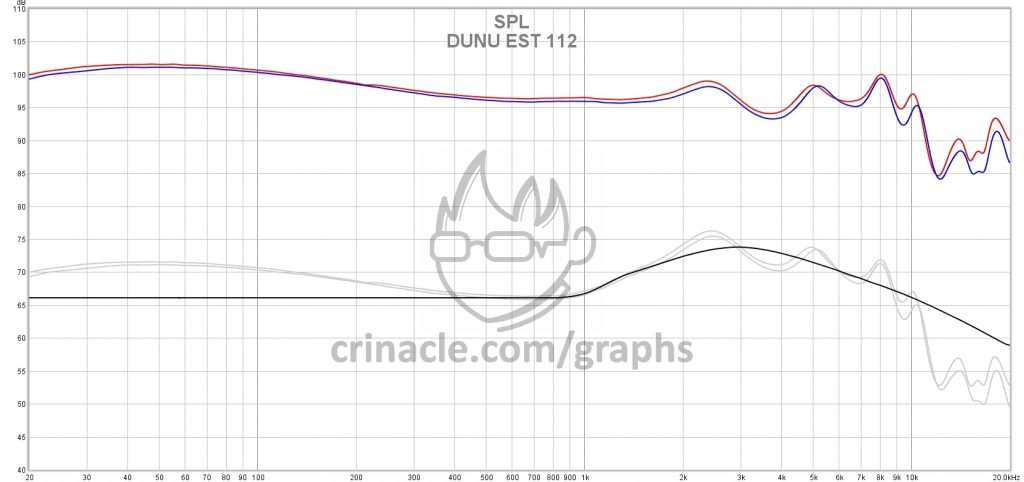
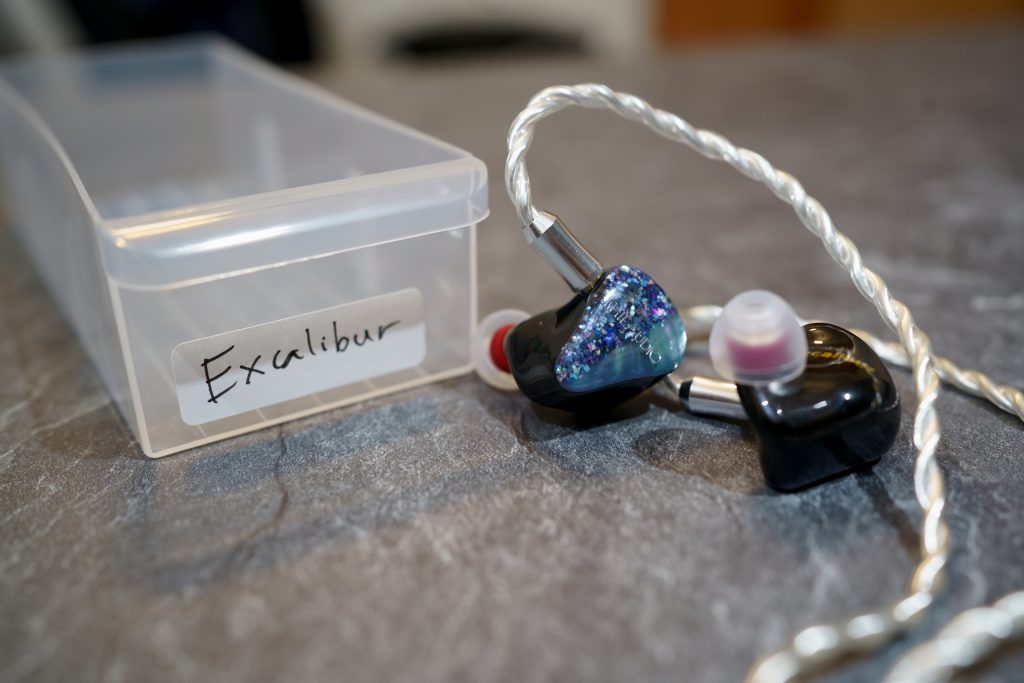
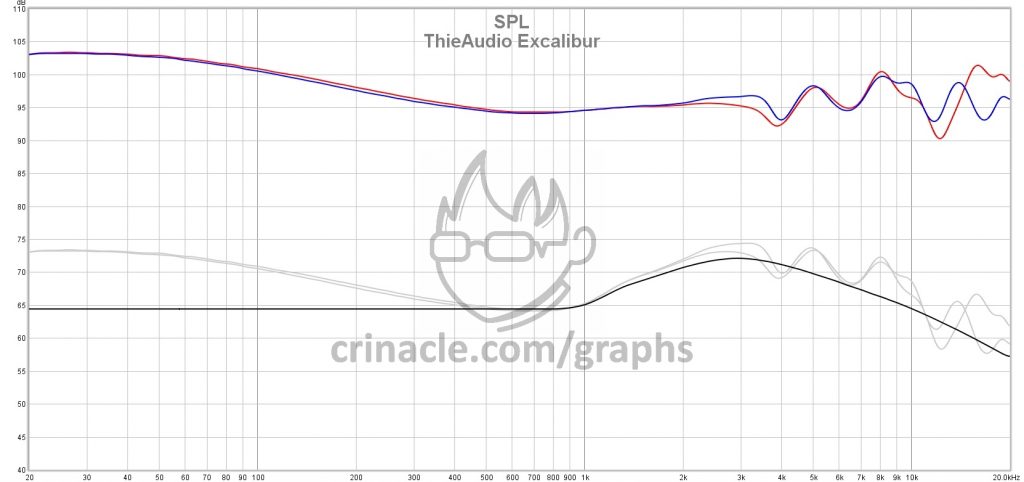
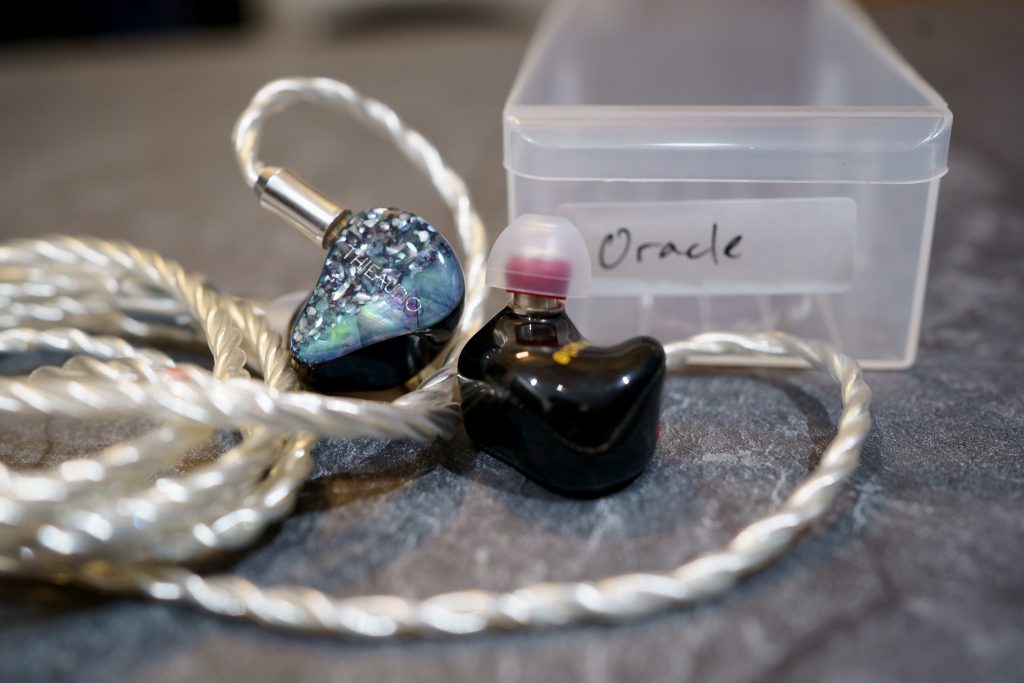
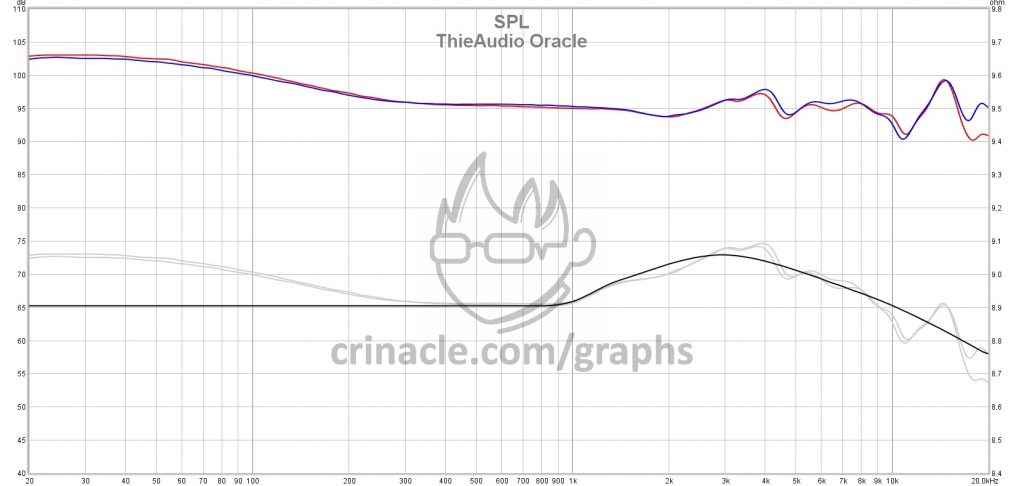

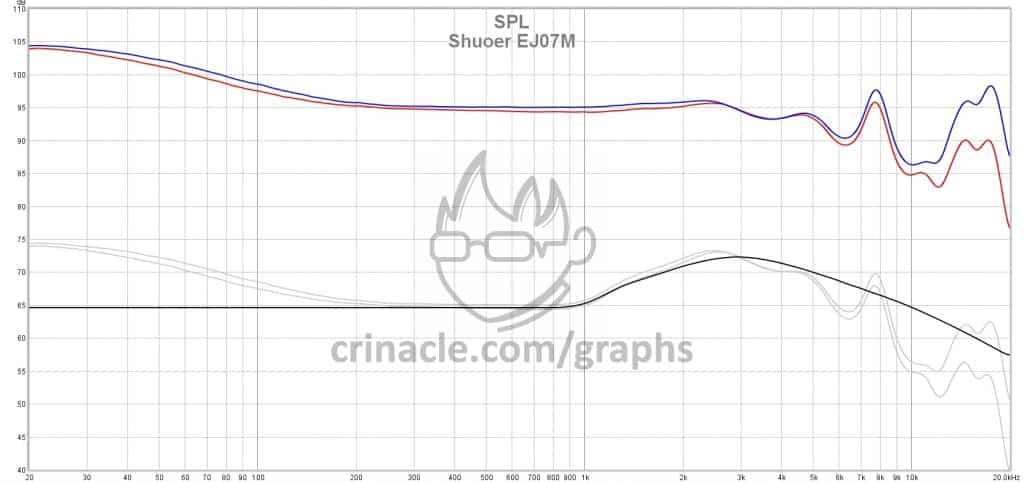

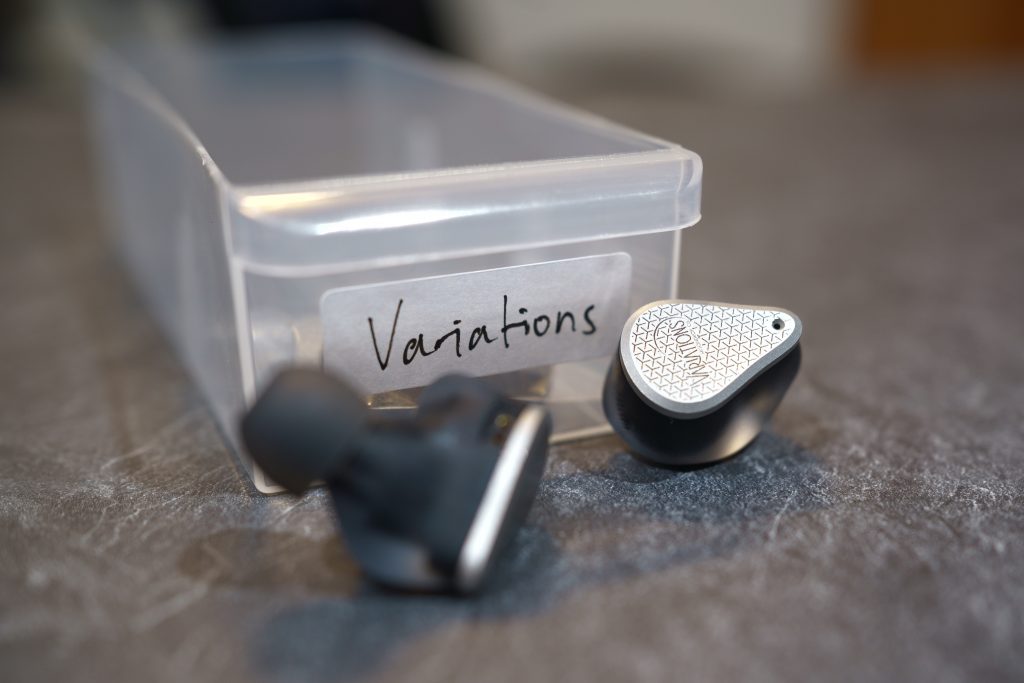
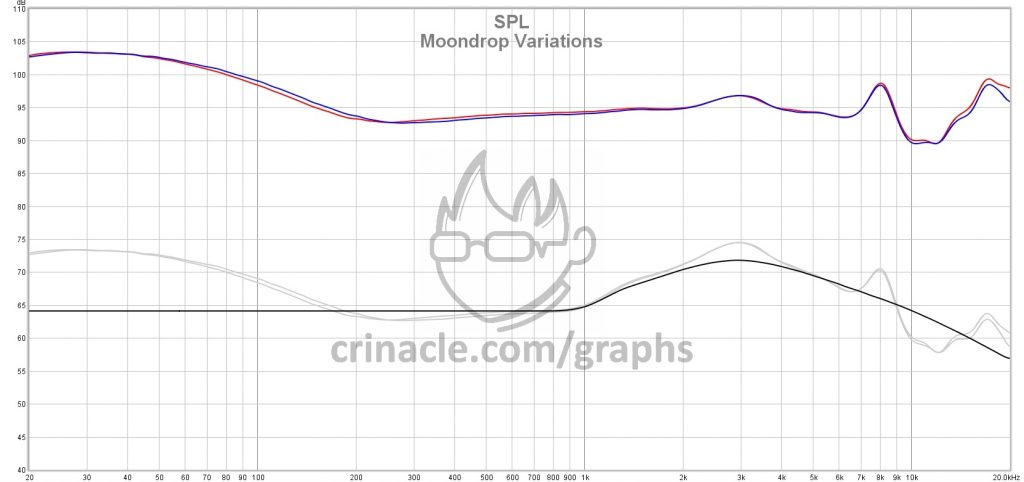


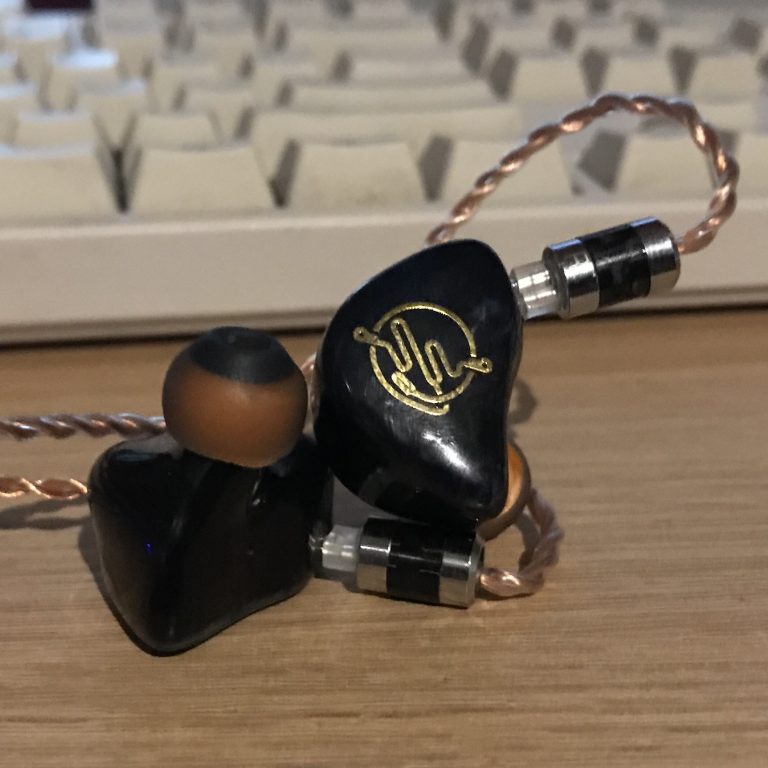

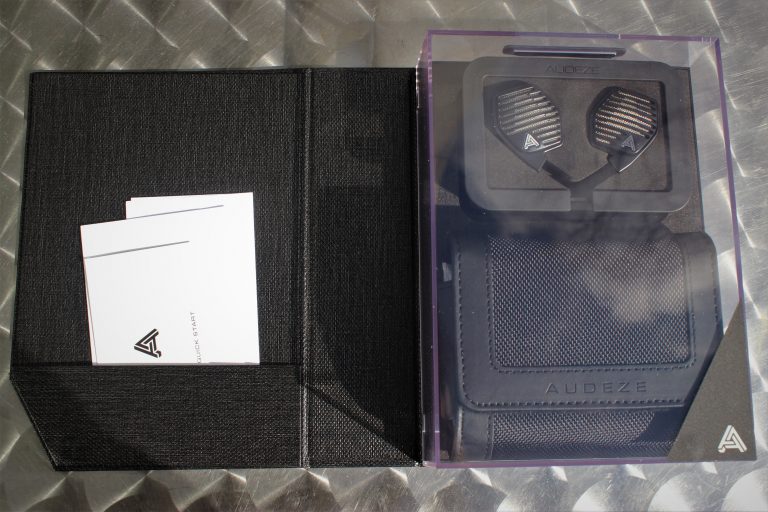
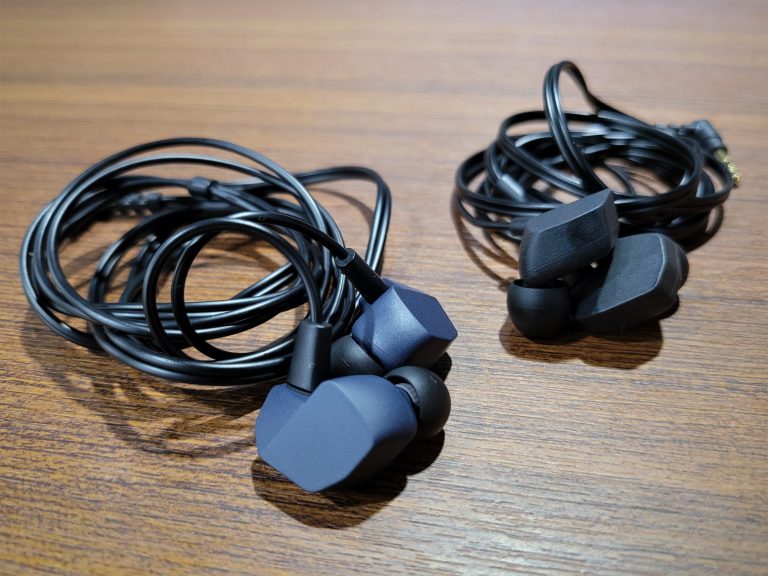



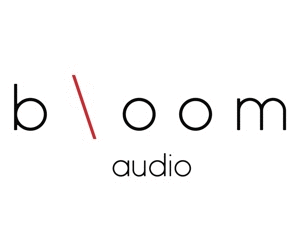
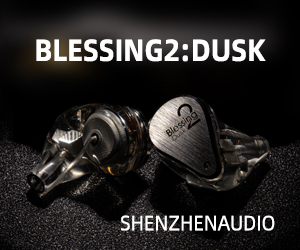
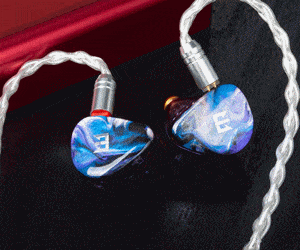

23 thoughts on “The Best $500 Tribrids: Oracle, Excalibur, Variations, EST112, EJ07M”
I’m curious about if the Variations is a real upgrade over the Dusk? And does it worth 200 bucks more?
I would say, yes and maybe. 🙂
100% it is. I think Crin has to re-do his B2/Dusk ranking. Its highest BA driver range literally tops out at 8 khz. With so many options now with higher ranged BAs or EST or hell even piezo drivers there’s no reason to buy or rank an IEM that literally excludes upper treble unless your ears can’t hear past 8 khz, in which case my condolences.
How, how did you arrive at the conclusion that Dusk cuts off at 8kHz, when you can just open the comparison tool here and see that treble is identical between Dusk and Variations up to 10kHz, then between 10 and 15kHz there’s a 5dB difference, Variations being louder, then equal again, and both extend beyond 20kHz at which the graph ends (a lot of IEMs do have sharp drops after 16 or 18kHz, but not these two). Unless you have better data, my condolences because not being capable to understand basic graphs must be real tough in the modern society. Or is it that above 8kHz Dusk’s treble is generated by DD? Is such an assumption based on documentation that’s available somewhere?
FR graphs literally can’t be trusted past 8 khz due to resonance (look it up!)
>my condolences because not being capable to understand basic graphs must be real tough in the modern society
Nice ad hominem. Great contribution to the discussion. Maybe take your own advice and research more about FR graphs so you can actually add something useful to the discussion!
Sure, the Knowles data sheet does show that the SWFK-31736 has little treble by the shape of the graph, but go take a closer look at the y-axis and compare it to the IEF graphs, they are completely different. Also, the x-axis is cut off at 10kHz on the Knowles graph (instead of 20kHz), but that doesn’t mean there is nothing beyond that, it only means that Knowles didn’t test it or didn’t include it.
There are very visible acoustic dampeners inside the Blessing 2, which alters the way it’s drivers sound to your ears. Other properties of the IEM do so too (tubing length, cavity volume, material etc.), which means that the raw measurements of a driver DO NOT exactly represent how an IEM with those specific drivers sound.
The only way to see the tonal performance of an IEM is considering the FR graph of it, not of the individual drivers within it. In this case, the Blessing 2 and the Variations have decent treble extension
FR graphs generally cannot be trusted past around 8 khz due to resonance (look it up!)
>In this case, the Blessing 2 … have decent treble extension
Yet literally every reviewer (including Crin) says it doesn’t. Like, wow, dude.
You are talking about 711 rigs which had resonance issues. The GRAS setup that crin uses has the resonance issue more or less solved, making it somewhat reliable for treble.
Plus, crin didn’t agree that the treble is non-existent but only said that “some may consider it rolled-off”. “Roll-off” means that the volume of it diminishes, not disappear immediately.
I don’t know where you got the idea that because everything beyond 8k is unreliable, therefore it doesn’t exist.
> an IEM that literally excludes upper treble.
That’s not true at all. The Blessing 2/Dusk do, as a matter of fact, have a decent treble extension . If you think that they do not have enough of treble extension, that would be just nitpicking as far your personal taste is concerned.
All Crinacle had to say about the treble extension was that “some may consider a little rolled off.” Keywords here are : some*, may*, little*. That is, nitpicking. Not even the FR measurements contradict this, even if you think they can’t confirm it either.
The only reason you would want the Variations over the Blessing 2/Dusk is the sub-bass performance. But this is just a matter of taste that might be worth the $200 more, for some* people.
Is there gonna be a review or an impression for the Elysian Acoustic Labs “X” flagship IEM?
There is.
Xenns Up?
Great work!!! I hope you add the ISN EST50
He won’t be a fan of that kind of tuning.
Of course moondrop always comes out on top. The absolute dominator of ief’s tunning preference.
Why of course They can do no wrong. It doesn’t matter that their faceplates fall off in a week or their paint chips. Herbert is bae.
I think it’s really true that Moondrop deserves attentions and praise because like you said, they do little wrong with their products in term of sound quality. So from this step, it’s just a matter how “right” do they sound to each individual.
At the point of writing this comment, I still think Moondrop as a brand is really good but it has become the type of “so good, it’s overrated now”. Many folks in the community often use Moondrop as the “standard” with many IEMs and some of them are often very vocal about it. I see nothing wrong with that but it does help to contribute to my conclusion.
Great comparison! Worth $3,000 if someone purchased each of the IEM separately.
How does the isolation compare amongst these (and maybe the SA6)?
Great writeup! I’ve been considering adding a tribrid to my collection, this shootout is just what I needed
The QC of Moondrop Variation is very poor. Mine faceplate came out in just 10-12 days. I frankly feel Crin should include build quality grade also apart from sonic and technical grade while arriving on the overall rating. After all, a broken product is of no use whatever its sonic and technical quality remains.
Late response, yes. I have a few Moondrop IEM’s (Starfield, S8, Variations, unopened Aria’s). The build quality on those upper end ones are great, so far. The Starfield has a little chip in the paint after dropping on the ground, grr. Not doubting your claims, just providing more user data. I think it would be difficult for a reviewer like Crin to include *long-term* build quality ratings. He can’t use any IEM long enough to get a good rating. If we built a user supported evaluation tool then we would generally hear only from the failures and who knows what percentage that would be of company / model sales? I’m for more data and build quality ratings but I don’t see how a single reviewer could go beyond the initial impressions. Long live Tyll.